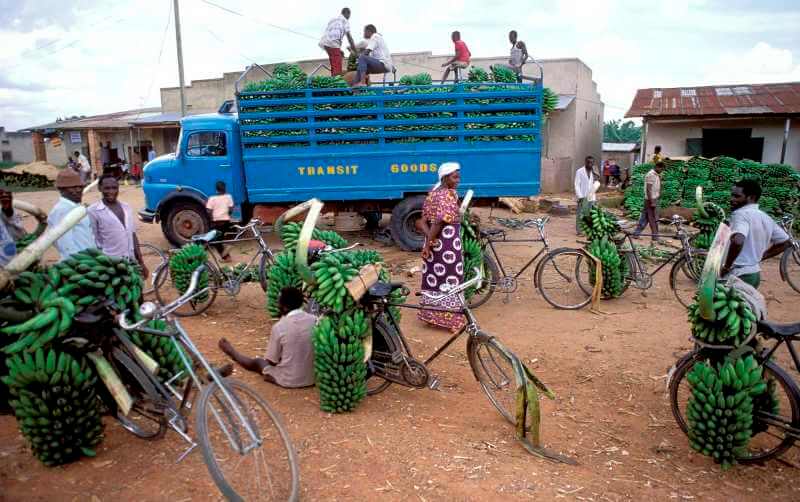
Our Projects are
Transforming African Trade
Quick Contacts
2nd Floor, Fidelity Insurance Centre Waiyaki Way, Westlands

The flagship Africa Agriculture Trade Monitor (AATM) calls for the diversification of import sources to mitigate the adverse effects of the Ukraine crisis.
African trade agreements can boost agricultural imports and exports and curb the adverse effects of climate change by including actionable provisions, according to the latest Africa Agriculture Trade Monitor (AATM).
Published by AKADEMIYA2063 and the International Food Policy Research Institute (IFPRI), the 2023 AATM calls for concerted regional- and continental-level action toward sustainable trade flows and more environment-friendly trade policies. The report also delves into the negative impacts of the Russia-Ukraine war on fertilizers and food trade and recommends action to lessen the effects of the shocks on African countries and consumers.
Unveiled at this year’s Africa Food Systems Forum (AGRF) in Dar es Salaam, Tanzania, the 2023 AATM provides high-quality trade statistics using consistent indicators to monitor trends in Africa’s participation in global trade as well as the status of intra-African trade. The report finds that Africa’s regional trade agreements (RTAs) do not exert a significant impact on its agricultural trade. The analysis attributes this to “shallow” trade agreements that focus on tariff reductions only, with limited impact on the agri-food market. The research highlights opportunities to include provisions on non-tariff measures and enhance their legal enforceability to accelerate intra-African agri-food trade. The report also calls for RTAs to include climate-related provisions to boost the contribution of trade to combat the negative impacts of climate change.
“Amid global shocks like Ukraine and COVID-19, as well as the climate crisis, which is emerging as the biggest threat to Africa’s agricultural trade development, trade policy is indispensable to leveraging agrifood trade as the lynchpin of Africa’s recovery and growth,” said Dr. Ousmane Badiane, Executive Chairperson at AKADEMIYA2063.
“The 2023 AATM analyzes opportunities to ‘deepen’ trade agreements to increase intra-African trade while prioritizing import diversification by tapping into the continent’s natural endowments and the deployment of new and greener technologies to lessen the impact of global shocks like the Ukraine crisis. With the African Continental Free Trade Area (AfCFTA) agreement under way, there will be added value in policy reforms to streamline and harmonize agriculture-relevant frameworks toward increased food security and a larger agrifood global market share for Africa,” he said.
The report’s analysis draws lessons from Africa’s current engagements for application to future frameworks to enhance continental integration. For instance, including enforceable provisions on non-tariff measures (NTMs), such as well-designed rules of origin and sanitary and phytosanitary (SPS) measures in trade agreements, can increase exports of agricultural products by up to 26 per cent, potentially through increasing market confidence and raising demand.
Amid rising temperatures which increased by 0.3°C per decade from 1991 to 2021, and the aftermath of the COVID-19 pandemic, the Russia-Ukraine war has brought an additional layer in already turbulent global markets.
“The Ukraine crisis set in motion substantial price increases and significant supply chain disruptions for critical sectors such as fertilizers and food, particularly wheat and vegetable oils, given the high reliance on both Ukrainian and Russian imports,” states Dr. Johan Swinnen, Director General of IFPRI. “This year’s AATM includes important recommendations for making Africa less vulnerable to such supply shocks, such as stronger social safety net programs to build the resilience of vulnerable households, increasing production on the continent to minimize import dependency, as well as diversifying imports”.
Intra-African agricultural trade increased significantly since the early 2000s; however, figures from 2021 show it remains below its peak value of US$16.1 billion recorded in 2013. An analysis of the nutritional content of intra-African trade indicates that the top agricultural product traded within the continent is pure sucrose, which accounts for four percent of intra-African agricultural trade, while a closer look at the cotton value chain suggests that African countries are primarily competitive in unprocessed products.
The report also assesses agricultural trade in the East African Community (EAC), finding that the region has one of the highest ratios of agriculture to GDP among the regional economic communities examined, as well as the highest introversion index, indicating a high intensity of intraregional trade. This is largely due to zero customs duties on intraregional flows and high extra-regional tariffs as well as improvements in logistic performance.
The Africa Agriculture Trade Monitor is produced and published under the African Growth and Development Policy (AGRODEP) Modeling Consortium and the Regional Strategic Analysis and Knowledge Support System (ReSAKSS) programs as a collaborative effort by AKADEMIYA2063 and IFPRI. The annual flagship report builds on the work of both organizations in support of the Comprehensive Africa Agriculture Development Programme (CAADP). The 6th edition was presented during the “Trade and Markets” plenary session at the AGRF 2023 Summit.
Read original article
Disclaimer: The views and opinions expressed in this article are those of the authors and do not necessarily reflect the official policy or position of TradeMark Africa.